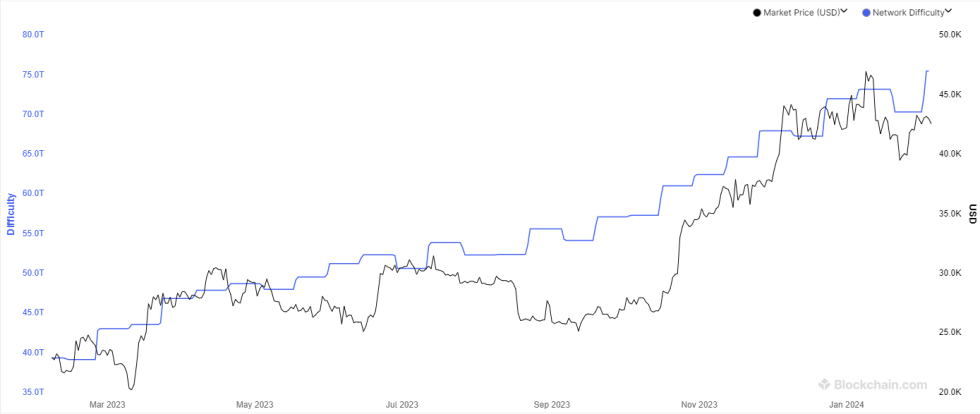On-chain data shows the Bitcoin mining difficulty has seen a rise of over 7% in the latest adjustment. Here’s what it could mean for the asset.
Bitcoin Mining Difficulty Has Registered A Surge Of More Than 7%
On the Bitcoin blockchain, there is an in-built special feature called the “mining difficulty.” Basically, why this feature exists is to ensure that the block rewards on the network continue to be given out near a constant rate.
The block rewards refer to the BTC that miners receive when they successfully add blocks to the network. These rewards are the only way in existence to mint more of the cryptocurrency. As such, the rate at which miners churn out blocks is equal to the production rate of the asset.
When miners add more computing power to the network (thus increasing the total “hash rate”), they naturally become faster at the process of mining and, hence, produce blocks at a faster rate.
This is problematic for the asset, though, since if miners continue to increase computing power in this manner, they will mint the coin faster and faster, leading to the token’s value taking a hit due to how supply-demand dynamics work.
Fortunately, Satoshi had the foresight to prevent the asset from falling prey to inflation in this manner, putting the mining difficulty system in place. When the miners become faster than the network’s intended rate of a block every ten minutes, the network ups its difficulty, causing miners to slow down.
Similarly, when the miners decrease their computing power and block times become longer than the standard rate, the chain responds by making it easier to mine the asset.
These changes take place through adjustments that occur approximately every two weeks. The entire difficulty system is run by code, so these adjustments are completely automatic.
The latest adjustment has just taken place recently and has upped the network’s difficulty to a new all-time high (ATH).

As displayed in the above graph, the Bitcoin mining difficulty has shot up by more than 7% in the latest adjustment, implying that it would now be significantly difficult for miners to find new blocks.
The reason behind the increase, as one would expect, is that the mining hashrate has been at ATH levels itself recently.

Interestingly, despite the sharp Bitcoin difficulty increase, the 7-day average value of the hashrate hasn’t registered any notable drawdown yet, suggesting that miners still have their machines connected.
The high difficulty last month had led to the hashrate plunging down, but as the difficulty had corrected down in response, the miners had leaped on the easier network difficulty and significantly upped their computing power.
Some had expected that as the difficulty would rise back again, some of these miners would once again disconnect, thus leading to the hashrate returning back toward previous levels. As this hasn’t happened so far, it appears that the newly added Bitcoin hashrate is showing some resilience.
BTC Price
At the time of writing, Bitcoin is floating around $43,100, up 2% over the past week.








